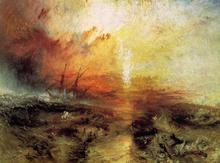 On 10 and 11 November, the specialist workshop Slave Trade in the Indian Ocean and Indonesian Archipelago Worlds (16th to 19th Century): New Research, Results and Comparisons organized by Matthias van Rossum, Titas Chakraborty and Ulbe Bosma took place at the IISH.
On 10 and 11 November, the specialist workshop Slave Trade in the Indian Ocean and Indonesian Archipelago Worlds (16th to 19th Century): New Research, Results and Comparisons organized by Matthias van Rossum, Titas Chakraborty and Ulbe Bosma took place at the IISH.
Recently, the study of slavery in Asia and the Indian Ocean World more generally, has become something of a hot topic in the Netherlands, reflecting the growth in the field around the world. The workshop challenged the characterization of slavery in Asia as ‘mild’ and local. Taken together, the research presented at the conference highlighted the paths into slave systems – piracy, poverty, raiding and sale among them; the role of individuals and companies, Asians and Europeans in the traffic of people; and multi-directionality of the networks of trade via which captives were transported to distant locations.
Matthias van Rossum, opened the workshop with the story of an enslaved man named Teewis from Cochin. Teewis hanged himself in his master’s house in the ommelanden of Batavia, on 7 May 1729. Teewis’s story highlights a number of the questions which were central to the workshop – Who were the enslaved men and women? How did they end up in the places where they lived and laboured? What networks facilitated this transportation of enslaved people? What was the nature of their bondage in relation to other forms of slavery and unfreedo.
Specialists at the workshop brought together their expertise. One of the points that came out of the discussions is the need to connect local systems of bondage and slavery to global commodified slavery. As Matthias van Rossum said, these systems were distinct, but linked; exit from one system could mean entrance into another, taking on a new relation of obligatory labour. How to define slavery in the context of a multiplicity of relationships of obligation remains a challenge for scholars, as does van Rossum’s call to understand the interplay between and common actors in connected systems of slavery.
The final session of the meeting was spent discussing common themes and ways forward. The numbers of men and women who were enslaved, how they entered slave systems and the multi-ethnic, trans-regional networks which facilitated their transportation are topics that require continued attention. But at the same time, there was certainly an awareness of the need to people these ‘big picture’ histories with the individuals, like Teewis of Cochin, whose lives were lived in bondage.
The organisers did an excellent job of bringing people together and creating an environment for great discussions, sharing of data, research, and excitement about the direction of the field. It was certainly an inspiring and fruitful few days.
Kate Ekama / Historici.nl
Leiden University
